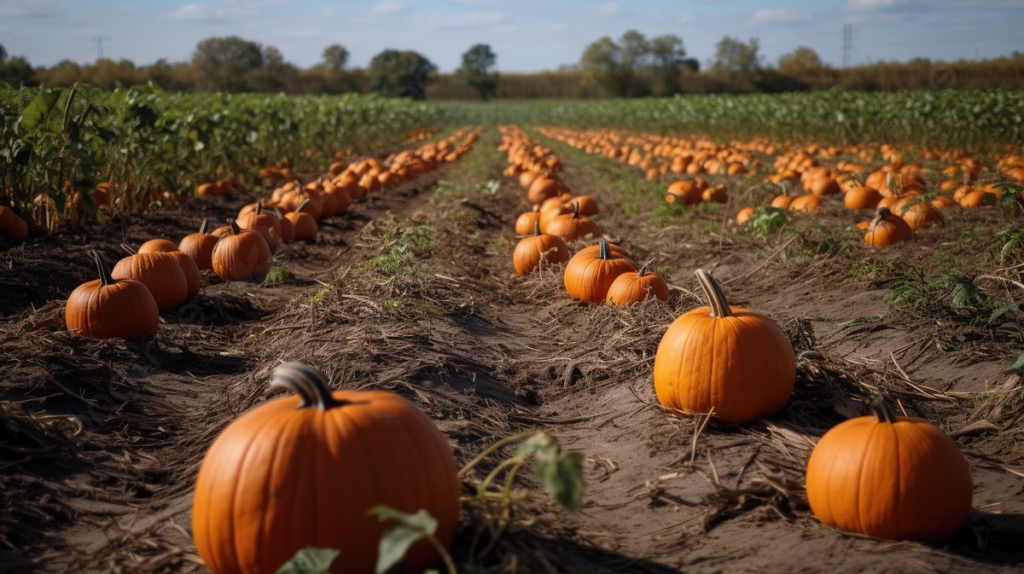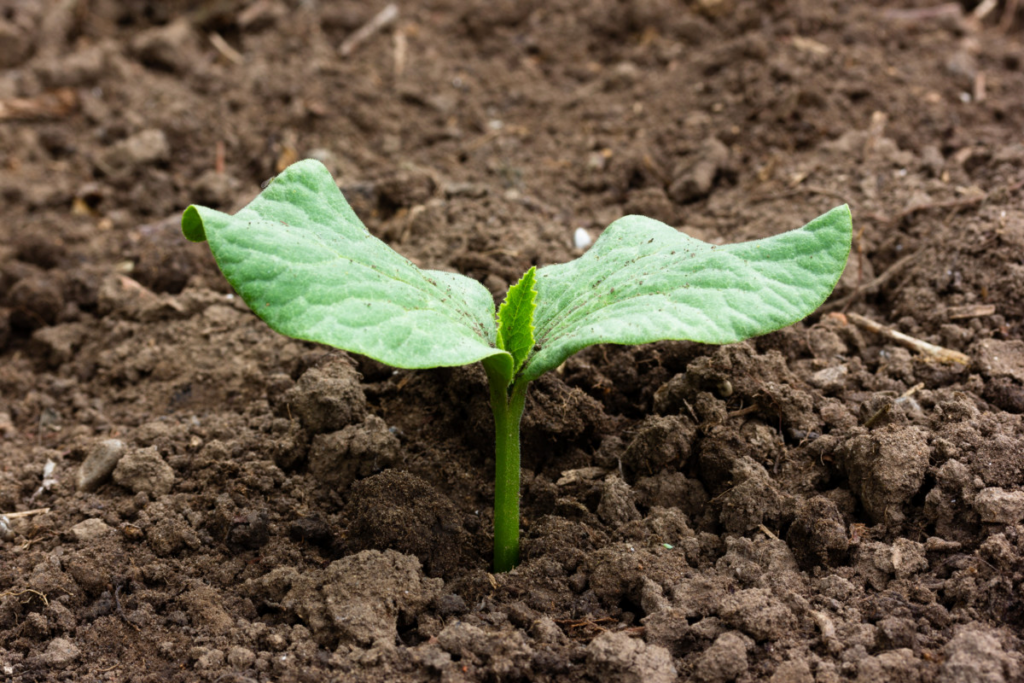Pumpkin Growing Stages: 8 Different Stages of Pumpkin Growth
How will you know when the pumpkins are ready to harvest? Is it the harvesting season? How long can they last? Is it possible to leave pumpkins on the vines too long? Dealing with all such questions?
Stop right here! I have provided all your answers. All you need is to take a few minutes and go through this article, which will help you grow pumpkins in your garden without any growing problems. Further, if you have any doubt you can ask me in the comment section where I will answer all your problems.
Pumpkin Varieties:
You can find pumpkin plants in different ranges of sizes and colors. it is quite difficult or we can say challenging to grow pumpkins in your garden if you want a few so I just you to grow pumpkins in more quantities of a muted color tone instead of growing the bright Orange Jack o’lantern type pumpkins. there are different pumpkin varieties and I have listed my favourite bright below:
Fairytale Pumpkin:
The fairytale pumpkin plants come in muted orange that is in a short squatty shape. They consist of deep ridges that give the pumpkin the classic heirloom pumpkin shape.

Porcelain Doll Pumpkin:
They do have similar shapes to the fairytale pumpkin plants but it actually more pink in color. These pumpkin plants consist of deep ridges that give a gorgeous effect to the pumpkin display.

New Moon Pumpkin:
The New Moon pumpkin plants are basically rounded jack-o’lantern-style shapes having smoother sides. They come under easy to carve and you will love the crisp white color of the skin.

Mustang PMR Pumpkin:
These are the pumpkin plants which are classic orange Halloween and fall colors. They are used to grow medium size which is disease resistant and can be grown by beginner gardeners.

Blue Bayou Pumpkin:
You will love to grow blue bayou pumpkins because the style of pumpkins is hard to locate in smaller areas. They come with a refreshing color to be used for fall decor.

Growth Stages Of Pumpkin Plant:
As annual plants, pumpkins complete an entire life cycle within a single year. They do have a long growing season, however, with most varieties requiring 75 to 100 days to produce ripe fruit.
The length of a pumpkin’s growing season is largely determined by fruit size. It’s not uncommon for particularly large cultivars to take 120+ days to reach maturity. Popular examples of giant pumpkins include ‘Big Max’, ‘Atlantic Giant’, and ‘Big Moon’.
Start pumpkins in late spring or summer, depending on your local climate, for a mid-fall harvest. The fruit should be harvested before the year’s first frost, so it’s important to get seeds or seedlings in the ground at the right time. Keep in mind that all winter squash, including pumpkins, must fully ripen on the vine.
1. Seed Germination:
- Almost all people know what a pumpkin seed looks and many people do like to eat them.
- The seeds do look flat and can be seen from ½ inch to over 3 inches long that too depending on the variety of pumpkins you are growing.
- There are pumpkins that produce seeds having a white or cream outer husk.
- You can see the seeds in light green color.
- There are many pumpkin varieties that are huskless seeds and there are pumpkins varieties that are edible.
- The pumpkin seeds do have an outer husk that works as a protective coating which prevents germinating all you need to provide it with the right environment.
- The pumpkin seeds need warm temperatures and moisture to penetrate and soften the husk.
2. Seedlings:
- After following the germination process you will notice the turning of plants into small seedlings having simpler leaves.
- The leaves of the pumpkins are known as cotyledons and are used to develop in the seed embryo before they are used to push into the soil surface and grow upward.
- The cotyledons are considered vital sources of energy in all the germination and sprouting processes.
- In the whole process, the plant goes under photosynthesis so that there are more leaves to develop.
- You need to provide the pumpkin seeds with soil temperature above 65°F for germination as soon as possible.
- Providing the seed with a temperature between 70 and 85°F is perfect for seedlings.
- The seed will start germinating after 7 to 10 days.
- After this, you will see new foliage or adult leaves.
- There you can see the first adult leaf emerging from the top of a seedling within 7 days after the seeds get to sprout.
- After growing of adult leaves from the sedling the cotyledons will die because other leaves of the pumpkin take over metabolic functions.

3. Vegetative Growth:
- The approximate vegetative growth period of pumpkin takes place from 50 to 60 days.
- In this stage main goal of pumpkin plant is to produce string vibes, new foliage, and a root system that helps to support future flowers and fruits.
- If you are growing vigorous vines that are used to grow upto 6 inches in one day.
- There are some gardeners that use to trim the vines after they grow up 10 to 15 feet long.
4. Flowering:
- The most of the pumpkin plants bloom flower within 55 to 70 days after sprouting.
- They are used to produce bright yellow, trumpet-shaped flowers having lengthy vines.
- The squash varieties of pumpkin plants do have different male and female flowers.
- The flowers used to emerge from vines are mostly male first after that only the female flowers open up shortly.
- There is a need for both a male and female flower to produce fruit as the female flowers present on vines turn into pumpkins and male flowers are used as the pollen supply.
- To differentiate between male and female pumpkin flowers you need to closely look at the part of the flower where they are connected to the stem.
- You will find the stem of each female flower features a noticeable bulge which is called flower’s ovary or part of the flower that is used to transform into a pumpkin after the fertilization process.

5. Pollination:
- To be successful in pollination it is necessary for female pumpkins to come into contact with pollen released from a male flower so that they grow fruit.
- The pollen is used to transfer from one flower to another with the help of insects, the winds, or by hand.
- The effect of hand-pollinating pumpkins and squash flowers can be seen in the Missouri Botanical Garden.
- It is possible for pumpkins to self-fertile as male flowers are used to pollinate a female flower on the same plant in short there is a need for only one pumpkin plant in the garden to produce fruit.
- I will suggest you grow multiple plants if you have enough space because the presence of male and female flowers is used to open up at different times.
- If you grow serval pumpkins in one area with different types will make you successful in pollination.
- The pumpkin blossoms are used open for about 4 hours during the morning or afternoon so that the plant does not wilt and fall from the plant.
- You will notice the pollinated female flowers get to open into fruit and will start to grow until the year’s first frost.
6. Early Fruiting:
- You can want fruit developing within 7 days after flowers are used to begin.
- You will find early fruiting as well at the base of the female flower where you will find the ovary on the plant.
- To get large pumpkins you need to pinch off female flowers that you can find after first fruit set.
- You can find a couple of pumpkins per plant that can divert energy to produce the largest fruit out of them.

7. Fruit Development and Ripening:
- The growth of fruit will continue to grow in perfect size for at least 45 to 55 days before it gets ripe.
- Pumpkins when get to a mature size they will start to produce a compound called ethylene which is an important part of the ripening process it will help in color changes and will cause the pumpkin to connect with the stem to the vine get harden and die at the end.
8. Harvesting & Storing Pumpkins:
- After reaching the end of the season of growing pumpkins you need to check the pumpkin patch you need to see if the leaves do create shade for the fruits.
- If they get too much shade it will make the pumpkins not too ripe so you need to prune the leaves so that you can help the pumpkins to ripen.
- To find out if the pumpkins are ready to harvest you can check the tale signs having withered browning vines and the fruit of the pumpkin ready to harvest will have withered brown vines having ripening colors such as orange, white, or blue, and the rind is firm and hard.
- To harvest the fruit you need to cut the pumpkin vine with the help of pruning sheers and make sure to leave a stem of at least 2-4″ on the pumpkin.
- Must be careful not to carry the pumpkins by the stem when the stem breaks it will shorten the storage life of the pumpkin’s fruits.
- Make sure to place the pumpkin in a dry space for at least 10 to 14 days that will help in curing the skin in firm it will help to get the longest shelf life.
- I suggest you keep the pumpkins in an elevated place on a pallet and make sure it does not touch so that the process of curing the pumpkin is successful.
- During frost, you need to move the pumpkins indoors as they are used to storing best in a cool, dry place, and make sure to arrange them in a way they dont touch each other.
- The pumpkins that you send are all able to last at least 3 to 4 months but you need to store them properly.

How far apart need to plant pumpkins?
You need to plant pumpkins far enough within a row and between rows to make sure the plant won’t get over the top and get overcrowded. The length of pumpkin vines varies between different cultivars. Make sure to plant the pumpkins with different spacing which depends on the cultivar and growing habit of the pumpkin. The here mentioned table does help them to plant the pumpkins properly:
| Pumpkin VineGrowth Category | Spacing Between Plants(within a row) | Spacing Between Rows |
| bush | 2-3 feet apart | 5-6 feet apart |
| semi-vine | 2-4 feet apart | 6-8 feet apart |
| vine | 4-5 feet apart | 8-10 feet apart |
Conclusion:
After reading the article mentioned all the pumpkin growing stages you can easily grow the pumpkin in your garden and enjoy their fruit.
FAQ’s
Is the growing of pumpkins possible to grow after they turn orange?
The answer is yes, they do continue to grow after they are used to ripen and then turn to orange. It is also possible that they continue to ripen or change the color whenever you pick them.


